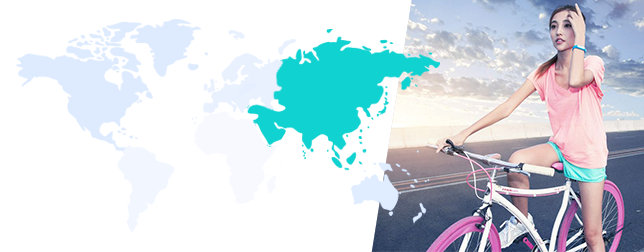Wearable devices such as Apple’s iWatch or the Fitbit have become ubiquitous in the West hemisphere. It seems that main wearable tech brands are also catching up in Asia. Since Asian manufacturers are jumping into the market from all angles, it is a challenging opportunity for Western companies in Asia to stabilize. With rapid change and development WT began to wonder if Asian Companies are becoming the new leader of the market?
The Accenture’s 2015 survey points that tech fans in Asia are hungrier for wearables than any other countries. The equivalent figures for China indicated that 67% of participants intend to buy a wearable fitness monitor in the next five years. It also state that 73% of participants are interested in buying smartwatches. These numbers are really impressive, particularly when compared to The United States because only 32% are interested in wearable fitness monitor, and 27% are interested in a smartwatch.
In 2015, an interview with The Wall Street Journal CEO of xiaomi, Jun, revealed that “even a pig can fly if it stands at the centre of a whirlwind”. Xiaomi- a mobile company, which is fighting Apple to be number one in China with fast and half-price handsets. Besides, with the same strategy, the company develops low-price and fashionable wearables. My personal favorite is Mi Band because it can monitor your activity levels, track walking distance and calculate calories burned. All with an outstanding battery life of 30 days. Mi band targets you toward a healthier lifestyle and also keeps you connected by alerting you of an incoming call.
Watchdata wearables from Beijing offer NFC payment with transportation application. However, it also can track your steps, monitor your sleep and incoming call reminder. Besides the typical features, Watchdata is water-resistance and has a 10-days battery life all for a low price. Moreover, Watchdata provides users with various colour to match your daily style.
Lenovo also gives a few ideas into wearables market: 1. a phone that wrap around your wrist like a slap bracelet; 2. light-up shoes that track your calories. The wearable phone from Lenovo is called C Plus. It is long, slim and meant to be worn like a bracelet. After it bends around your wrist, the interface changes to a simpler UK design that works better as a watch and fitness tracker. Regarding light-up shoes, Lenovo has partner with Vibram. The smart shoes can track steps, calories burned and charge wirelessly. The soles light up when they sense movement.
Huawei is also another big name in Asian Manufacturers. Huawei is really successful with their TalkBand – a smart health tracker, a weather tracker or a phone finder. Besides, Huawei provides the classic look for watch with smart functions integrated for ones who would love to experience the smart tech but are still a fan of classical watches.
Mobvoi is not a big name in the wearable market – yet. However, Mobvoi is a recent WT star as they debuted Ticwatch 2 at the WT | Wearable Technologies Conference 2016 USA. This wearable differs from typical smartwatches in a couple of ways. It runs an android-based OS and has a touch-sensitive surface on the right side of the face. First of all, it can be a health tracker which analysis heart rate, speed, distance and GPS location. Then, it is integrated with voice interaction so you can easily set notification, reminders and calendar appointment within seconds.
Last but not least, the tech Giant Samsung approached CES 2016 with Samsung Tiptalk. The Tiptalk is a clever new smart strap for traditional watches, adding fitness tracking, notifications, calling features to any watch. The most special thing is that you can take calls by pressing your finger into your ear. The call audio isn’t transmitted via bone conduction, but vibrations are being sent from your wrist to your finger through your body.
Along with the accelerated development and some of the world’s biggest brands in the back yard, Asian countries seem to be driving innovation and consumer acceptance within the wearable industry.












